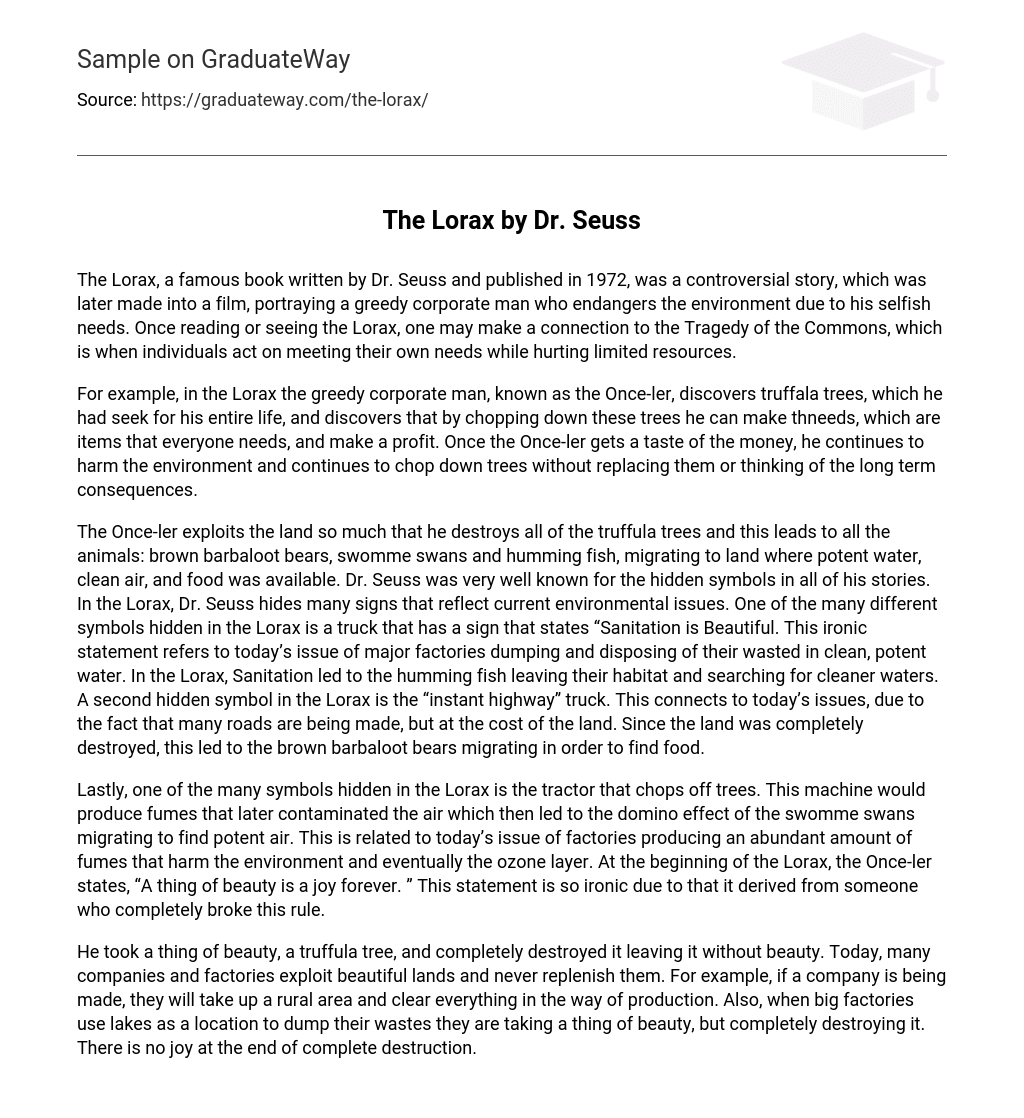The Lorax, a renowned book authored by Dr. Seuss and published in 1972, was a contentious tale that was subsequently adapted into a film. It depicts an avaricious businessman who jeopardizes the environment for personal gain. After experiencing The Lorax, individuals may draw parallels to the concept of the Tragedy of the Commons, where people prioritize their own needs at the expense of finite resources.
The Lorax features a character called the Once-ler, who is a greedy corporate man. He has spent his whole life searching for truffala trees, which he finally finds. He realizes that by cutting down these trees, he can make thneeds – essential items for everyone – and earn a profit. As he becomes consumed by money, he continues to damage the environment by chopping down trees and fails to consider the long-term repercussions or replenish the trees.
The Once-ler’s excessive exploitation of the land results in the destruction of all the truffula trees, forcing the brown barbaloot bears, swomme swans, and humming fish to migrate elsewhere in search of clean air, potent water, and food. Dr. Seuss is renowned for incorporating concealed symbols into his stories, including the Lorax, which addresses various contemporary environmental concerns. One of these symbols is a truck with a sign declaring “Sanitation is Beautiful,” ironically referencing the problem of major factories dumping waste into pure water sources. Just like in the Lorax, this contamination causes the humming fish to abandon their habitat in search of cleaner waters. Another hidden symbol in the Lorax is represented by the “instant highway” truck, reflecting the modern issue of constructing roads at the expense of native land. The destruction of the land in the story ultimately leads to the migration of the brown barbaloot bears as they seek out food.
In summary, the Lorax has various symbols, one of which is the tree-chopping tractor. The tractor emits fumes that pollute the air, causing the swomme swans to migrate in search of cleaner air. This relates to the modern problem of factories releasing harmful fumes into the environment, ultimately damaging the ozone layer. Interestingly, at the start of the Lorax, the Once-ler ironically utters the words, “A thing of beauty is a joy forever,” despite being responsible for breaking this rule.
He took a thing of beauty, a truffula tree, and completely destroyed it, leaving it devoid of beauty. Today, numerous companies and factories exploit scenic lands without ever rejuvenating them. When constructing a company, for instance, rural areas are cleared of all obstacles to facilitate production. Additionally, large factories choose to dispose of their waste in lakes, consequently ruining these beautiful bodies of water. The end result is pure devastation, with no happiness in sight.





